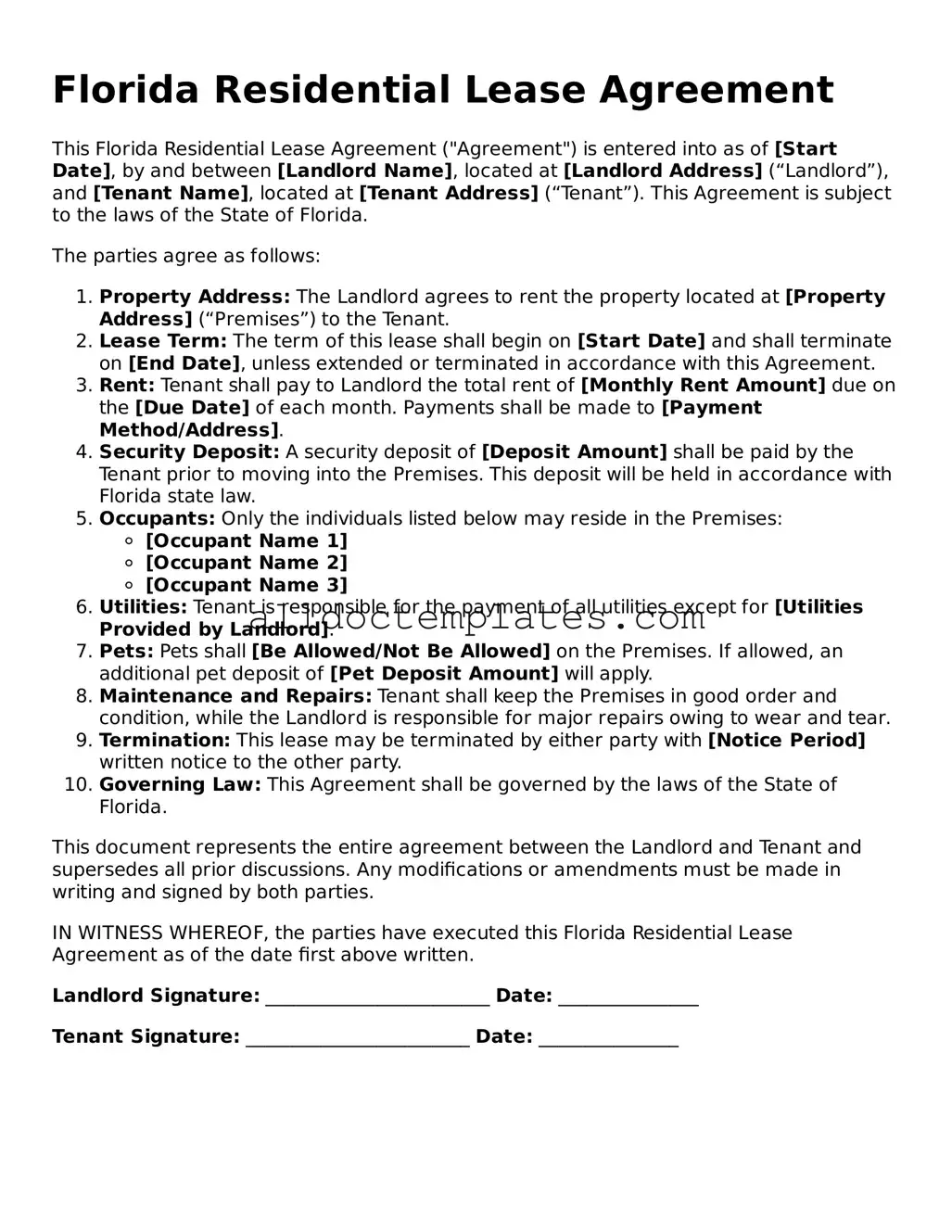Florida Residential Lease Agreement
This Florida Residential Lease Agreement ("Agreement") is entered into as of [Start Date], by and between [Landlord Name], located at [Landlord Address] (“Landlord”), and [Tenant Name], located at [Tenant Address] (“Tenant”). This Agreement is subject to the laws of the State of Florida.
The parties agree as follows:
- Property Address: The Landlord agrees to rent the property located at [Property Address] (“Premises”) to the Tenant.
- Lease Term: The term of this lease shall begin on [Start Date] and shall terminate on [End Date], unless extended or terminated in accordance with this Agreement.
- Rent: Tenant shall pay to Landlord the total rent of [Monthly Rent Amount] due on the [Due Date] of each month. Payments shall be made to [Payment Method/Address].
- Security Deposit: A security deposit of [Deposit Amount] shall be paid by the Tenant prior to moving into the Premises. This deposit will be held in accordance with Florida state law.
- Occupants: Only the individuals listed below may reside in the Premises:
- [Occupant Name 1]
- [Occupant Name 2]
- [Occupant Name 3]
- Utilities: Tenant is responsible for the payment of all utilities except for [Utilities Provided by Landlord].
- Pets: Pets shall [Be Allowed/Not Be Allowed] on the Premises. If allowed, an additional pet deposit of [Pet Deposit Amount] will apply.
- Maintenance and Repairs: Tenant shall keep the Premises in good order and condition, while the Landlord is responsible for major repairs owing to wear and tear.
- Termination: This lease may be terminated by either party with [Notice Period] written notice to the other party.
- Governing Law: This Agreement shall be governed by the laws of the State of Florida.
This document represents the entire agreement between the Landlord and Tenant and supersedes all prior discussions. Any modifications or amendments must be made in writing and signed by both parties.
IN WITNESS WHEREOF, the parties have executed this Florida Residential Lease Agreement as of the date first above written.
Landlord Signature: ________________________ Date: _______________
Tenant Signature: ________________________ Date: _______________
